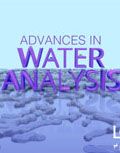Article
Spectroscopy E-Books
Spectroscopy E-Books
When the Wrong Way is Better: Using Wrong-Way-Round Ionization for the Targeted Analysis of Pharmaceuticals in Wastewater
Author(s):
Effluents from wastewater treatment plants (WWTPs) are a major source of contamination by pharmaceuticals and personal care products (PPCPs) in the environment. The presence of low levels of PPCPs in surface and drinking water sources raises public concern because of the potential detrimental ecological effects of these contaminants. Because of these concerns, scientists and engineers have been interested in detecting PPCPs in water to evaluate their fate and transport in the environment, as well as monitor their transformation and degradation at WWTPs. Liquid chromatography coupled with mass spectrometry (LC–MS) has been the method of choice for separation and detection of PPCPs, because PPCPs are highly soluble in water and have low volatility. The majority of LC–MS methods use electrospray ionization either in positive or negative mode, with an acidic or basic mobile phase, respectively. As an alternative, this article presents the use of “wrong-way-round ionization” in electrospray mass spectrometry, where protonation of neutral or weakly basic molecules occurs in a strongly basic mobile phase in LC–MS. When “wrong-way-round ionization” was employed in LC–MS for the analysis of PPCPs in wastewater samples, increased signal intensities, by at least an order of magnitude, were observed in PPCPs with diverse polarity and acidic properties.
Read more
.
Newsletter
Get essential updates on the latest spectroscopy technologies, regulatory standards, and best practices—subscribe today to Spectroscopy.


